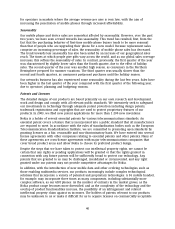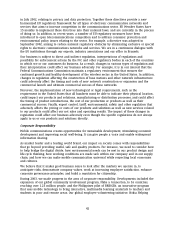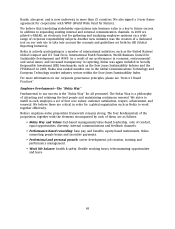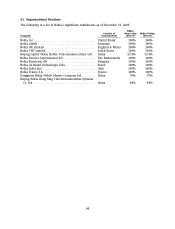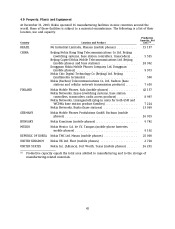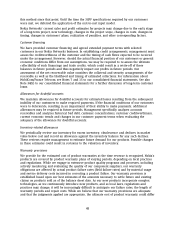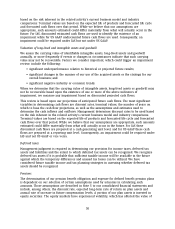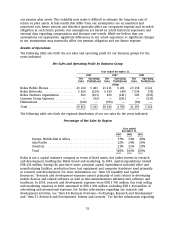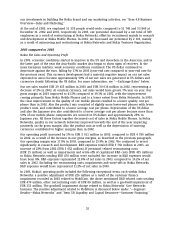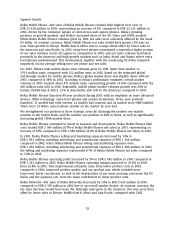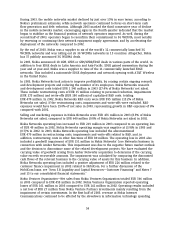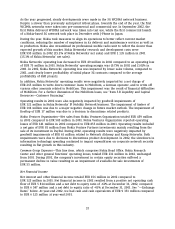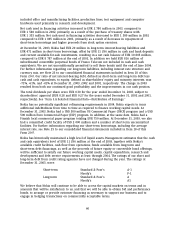Nokia 2003 Annual Report Download - page 51
Download and view the complete annual report
Please find page 51 of the 2003 Nokia annual report below. You can navigate through the pages in the report by either clicking on the pages listed below, or by using the keyword search tool below to find specific information within the annual report.based on the risk inherent in the related activity’s current business model and industry
comparisons. Terminal values are based on the expected life of products and forecasted life cycle
and forecasted cash flows over that period. While we believe that our assumptions are
appropriate, such amounts estimated could differ materially from what will actually occur in the
future. For IAS, discounted estimated cash flows are used to identify the existence of an
impairment while for US GAAP undiscounted future cash flows are used. Consequently, an
impairment could be required under IAS but not under US GAAP.
Valuation of long-lived and intangible assets and goodwill
We assess the carrying value of identifiable intangible assets, long-lived assets and goodwill
annually, or more frequently if events or changes in circumstances indicate that such carrying
value may not be recoverable. Factors we consider important, which could trigger an impairment
review, include the following:
• significant underperformance relative to historical or projected future results;
• significant changes in the manner of our use of the acquired assets or the strategy for our
overall business; and
• significant negative industry or economic trends.
When we determine that the carrying value of intangible assets, long-lived assets or goodwill may
not be recoverable based upon the existence of one or more of the above indicators of
impairment, we measure any impairment based on discounted projected cash flows.
This review is based upon our projections of anticipated future cash flows. The most significant
variables in determining cash flows are discount rates, terminal values, the number of years on
which to base the cash flow projections, as well as the assumptions and estimates used to
determine the cash inflows and outflows. Management determines discount rates to be used based
on the risk inherent in the related activity’s current business model and industry comparisons.
Terminal values are based on the expected life of products and forecasted life cycle and forecasted
cash flows over that period. While we believe that our assumptions are appropriate, such amounts
estimated could differ materially from what will actually occur in the future. For IAS these
discounted cash flows are prepared at a cash generating unit level, and for US GAAP these cash
flows are prepared at a reporting unit level. Consequently, an impairment could be required under
IAS and not US GAAP or vice versa.
Deferred taxes
Management judgment is required in determining our provision for income taxes, deferred tax
assets and liabilities and the extent to which deferred tax assets can be recognized. We recognize
deferred tax assets if it is probable that sufficient taxable income will be available in the future
against which the temporary differences and unused tax losses can be utilized. We have
considered future taxable income and tax planning strategies in assessing whether deferred tax
assets should be recognized.
Pensions
The determination of our pension benefit obligation and expense for defined benefit pension plans
is dependent on our selection of certain assumptions used by actuaries in calculating such
amounts. Those assumptions are described in Note 5 to our consolidated financial statements and
include, among others, the discount rate, expected long-term rate of return on plan assets and
annual rate of increase in future compensation levels. A portion of our plan assets is invested in
equity securities. The equity markets have experienced volatility, which has affected the value of
50


